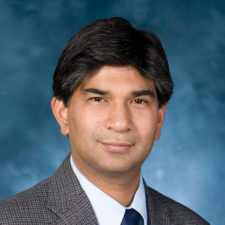High-Power Broadband Supercontinuum Fiber Lasers
Super-continuum (SC) lasers combine the broadband attributes of lamps with the spatial coherence and high brightness of lasers. By exploiting a modulational-instability initiated SC mechanism, an all-fiber-integrated SC laser with no moving parts is demonstrated using commercial off-the shelf components in a simple architecture. As an example, a Mid-Infrared Super-Continuum Laser (MISCL) has been developed that generates super-continuum covering the spectral range from 0.8 to 4.5 microns. One version of the MISCL is based on an erbium/ytterbium power amplifier, while a second version of the MISCL is based on a thulium doped power amplifier. The fiber laser architecture is a platform where SC in the visible, near-IR, mid-IR and long-wave-IR can be generated by appropriate selection of the amplifier technology and the SC generation fiber.

MODULATIONAL INSTABILITY INITIATED SC GENERATION
Our Mid-Infrared Super-Continuum Laser (MISCL) is an all-fiber-integrated, high-powered light source that is elegant not because of its complexity, but rather because of its simplicity. For example, a block-diagram of a MISCL laser is illustrated in Fig. 1. We start with a distributed feedback laser diode with a wavelength near 1550nm, whose ~0.5-2nsec pulsed output is then amplified in a multiple-stage fiber amplifier. The first stage pre-amplifier can be a standard erbium-doped fiber amplifier, and its configuration is designed for optimal noise performance. Between amplifier stages band-pass filters can be used to block amplified spontaneous emission, and isolators may be used to prevent spurious reflections. The power amplifier stage is often made in cladding-pumped fiber amplifier, and its performance is optimized to minimize nonlinear distortion. This pump laser configuration is a pretty common and standard telecom design.

The novel SC generation occurs in the relatively short lengths of fiber that follow the pump laser. As shown in Fig. 1, we use exemplary just one or two meters of standard single-mode fiber SMF after the power amplifier stage, and this fiber is then followed by several meters of SC generation fiber. In the SMF, the peak power may be several kilowatts, and the pump light falls in the anomalous group velocity dispersion regime, which is often called the soliton regime. For these high peak powers in this dispersion regime, the nanosecond pulses are unstable due to a phenomenon known as modulational instability, which is basically parametric amplification in which the fiber nonlinearity helps to phase-match. As a consequence, the nanosecond pump pulses are broken into many shorter pulses, because modulational instability is trying to form soliton pulses from the quasi-cw background. Although the DFB laser diode and amplification starts with nanosecond long pulses, through modulational instability in the short length of SMF fiber about 0.5psec to several picosecond long pulses are formed with high intensity. Thus, the few meters of SMF fiber results in an output similar to that produced by mode-locked lasers, except in a much simpler and cost-effective manner.

The short pulses created through modulational instability are coupled into a nonlinear fiber for generation of SC. The nonlinear mechanisms leading to broadband SC include four-wave mixing or self-phase modulation along with the optical Raman effect [3]. Since the Raman effect is self-phase-matched and shifts light to longer wavelength by emission of optical phonons, the SC spreads to longer wavelengths very efficiently. The short wavelength edge arises from four-wave mixing, and often times the short wavelength edge is limited by increasing group velocity dispersion in the fiber. In our experience, for sufficient peak power and SC fiber length, the SC generation process will fill the long wavelength edge up to the transmission window of the particular fiber used.
The configuration of Fig. 1 is actually a platform for generating SC over multiple wavelength ranges. For example, some of the mature fiber amplifiers for the power amplifier stage include ytterbium-doped fibers (~1060nm), erbium/ytterbium doped fibers (~1550nm), or thulium-doped fibers (~2000nm). In addition, some of the candidates for the SC fiber include fused silica fibers (for generating SC between ~0.8-2.7 microns), mid-infrared fibers such as fluorides, chalcogenides or tellurites (for generating SC out to 4.5 microns or longer), photonic crystal fibers (for generating SC between ~0.4 to 1.7 microns), or combinations of these fibers. Therefore, by selecting the appropriate fiber amplifier doping and nonlinear fiber, SC can be generated in the visible, near-infrared or mid-infrared wavelength region.
Links
“Supercontinuum Generation in Silica Fibers by Amplified Nanosecond Laser Diode Pulses,” (2007)
“Power adjustable visible supercontinuum generation using amplified nanosecond gain- switched laser diode” (2008)

 MENU
MENU 